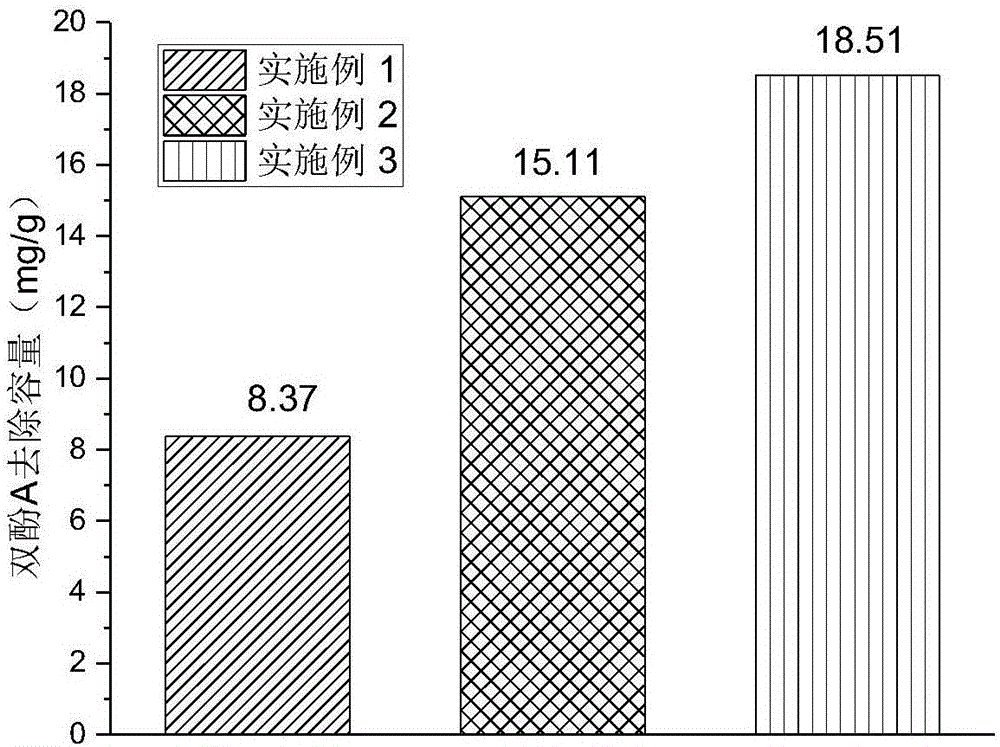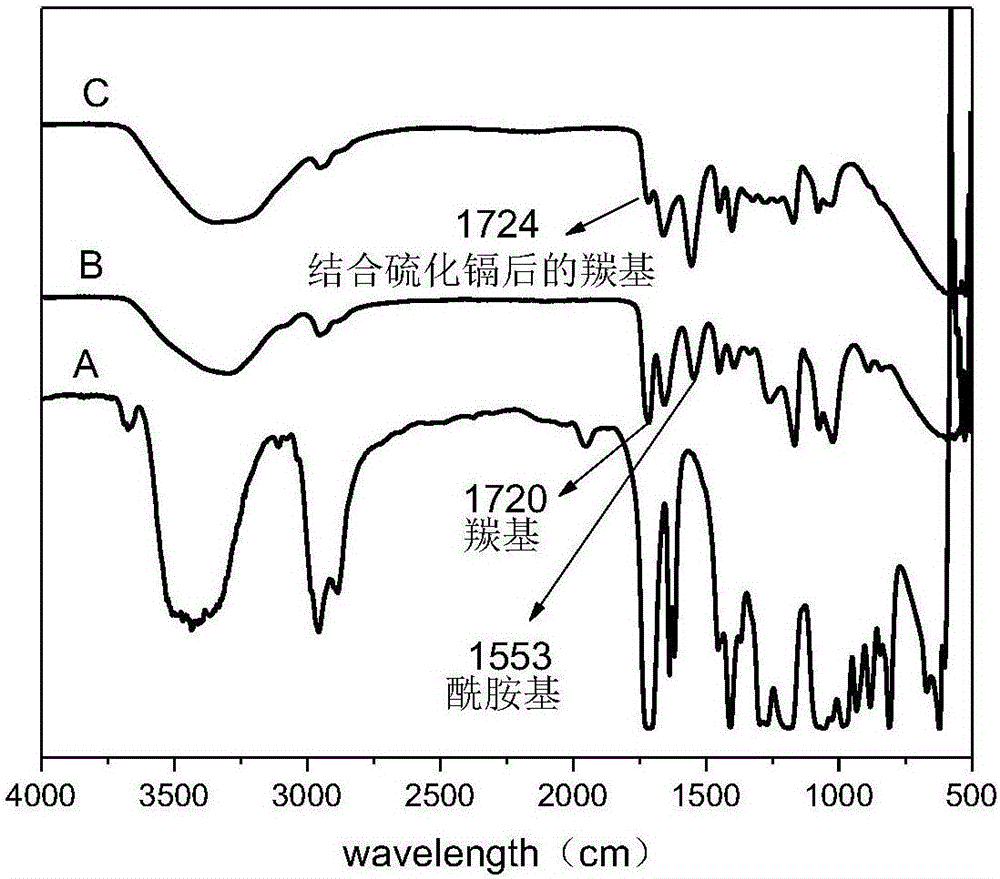Preparation method and application of amido equipped composite hydrogel loaded with nano-cadmium sulfide photocatalyst
A composite hydrogel, photocatalyst technology, applied in physical/chemical process catalysts, organic compound/hydride/coordination complex catalysts, chemical instruments and methods, etc. The problems of high glue purity and complex synthesis route can achieve the effect of good pore structure, large specific surface area and good mechanical strength.
- Summary
- Abstract
- Description
- Claims
- Application Information
AI Technical Summary
Problems solved by technology
Method used
Image
Examples
Embodiment 1
[0044] 1. Weigh a certain mass of N-methylolacrylamide monomer and dissolve it in deionized water as component A, then add a certain amount of 2-hydroxyethyl acrylate to the above solution as component B, distilled water as component Divide into C, mix according to (A+B):C is 1:4 (V / V), where A:B is 1:5 (mol / mol); ultrasonic 30min to mix the solution evenly, fill the mixed solution with N 2 to ensure anaerobic conditions.
[0045] 2. Radiation polymerization process: by directly adding refrigerant, at -78°C, using 60 Co-γ high-energy rays, the radiation dose is controlled to 1×10 5 Gy.
[0046] 3. In-situ loading of nano-cadmium sulfide: Weigh 0.5g of dry gel into a 100ml Erlenmeyer flask, add 50ml of 0.2mol / L CdCl 2 solution, placed in a constant temperature shaker for 24h and filtered out the hydrogel, dried at room temperature, and then placed in 50ml of 0.2mol / L Na 2 Shake in S solution for 24h. The formation of CdS was indicated when the color of the hydrogel changed...
Embodiment 2
[0049] (A+B): C is 1:4 (V / V), monomer solution ratio: A: B is 1:5 (mol / mol);
[0050] Radiation polymerization process: at a temperature of -78°C, using 60 Co-γ high-energy rays, the radiation dose is controlled to 1×10 5 Gy;
[0051] CdCl used 2 The concentration of the solution is 0.2mol / L, the Na used 2 The concentration of S solution is 0.2mol / L;
[0052] The nano-cadmium sulfide composite hydrogel used was irradiated with 100W xenon lamp when treating bisphenol A;
[0053] 0.1g of nano-cadmium sulfide-loaded composite hydrogel was placed in 40ml of 50mg / L bisphenol A solution for 24h adsorption and photocatalytic degradation reaction. The removal capacity of the composite hydrogel to bisphenol A is 15.11 mg / g, and the removal rate reaches 80%. Due to the loading of nano-cadmium sulfide, the mechanical strength of the hydrogel is greatly enhanced, the service life is long, and the adsorption is also enhanced.
Embodiment 3
[0055] (A+B): C is 1:4 (V / V), monomer solution ratio: A: B is 1:5 (mol / mol);
[0056] Radiation polymerization process: at a temperature of -78°C, using 60 Co-γ high-energy rays, the radiation dose is controlled to 1×10 5 Gy;
[0057] CdCl used 2 The concentration of the solution is 0.2mol / L, the Na used 2 The concentration of S solution is 0.2mol / L;
[0058] The nano cadmium sulfide composite hydrogel used was irradiated with 500W xenon lamp when treating bisphenol A;
[0059] 0.1g of nano-cadmium sulfide-loaded composite hydrogel was placed in 40ml of 50mg / L bisphenol A solution for 24h adsorption and photocatalytic degradation reaction. The removal capacity of the composite hydrogel to bisphenol A is 18.51 mg / g, and the removal rate reaches 95%. Due to the loading of nano-cadmium sulfide, the mechanical strength of the hydrogel is greatly enhanced, the service life is long, and the adsorption is also enhanced.
PUM
| Property | Measurement | Unit |
|---|---|---|
| adsorption capacity | aaaaa | aaaaa |
| adsorption capacity | aaaaa | aaaaa |
| adsorption capacity | aaaaa | aaaaa |
Abstract
Description
Claims
Application Information
 Login to View More
Login to View More - R&D
- Intellectual Property
- Life Sciences
- Materials
- Tech Scout
- Unparalleled Data Quality
- Higher Quality Content
- 60% Fewer Hallucinations
Browse by: Latest US Patents, China's latest patents, Technical Efficacy Thesaurus, Application Domain, Technology Topic, Popular Technical Reports.
© 2025 PatSnap. All rights reserved.Legal|Privacy policy|Modern Slavery Act Transparency Statement|Sitemap|About US| Contact US: help@patsnap.com



